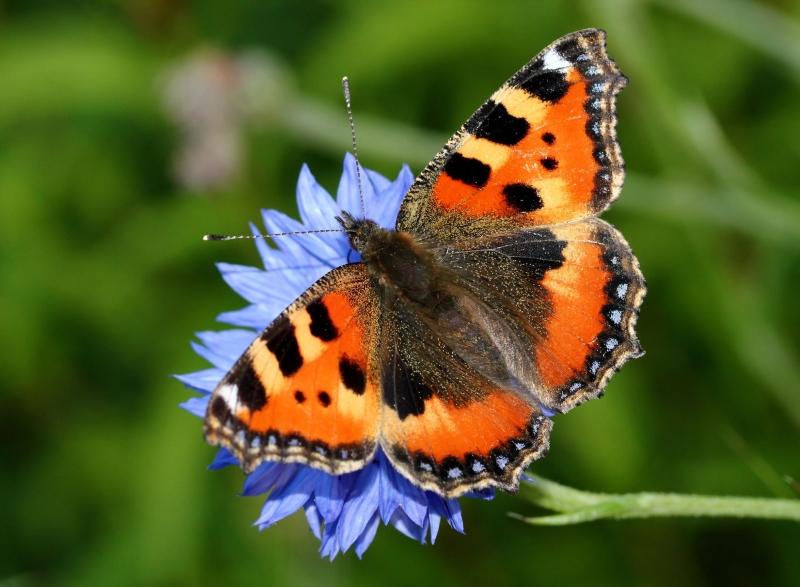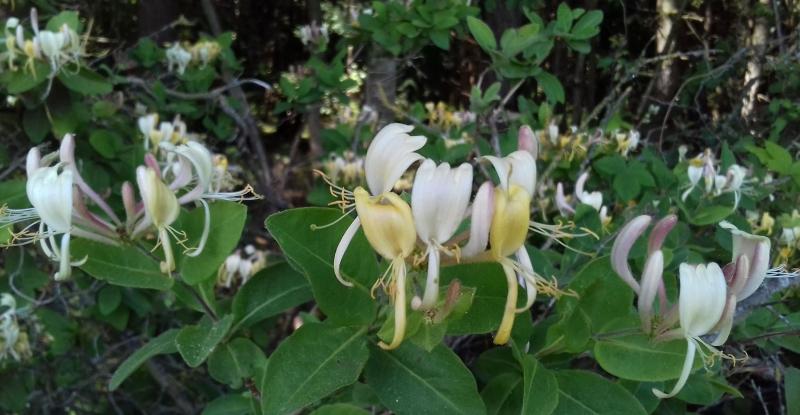
Grasslands for native pollinators
During the summer months our grasslands are full of colourful insects, many of which are important pollinators ensuring the diversity of our wildflowers survives and flourishes. Sophie, our Biodiversity Manager, explains how we plan to do more for our native pollinators by enhancing the floristic diversity of the woodland rides and glades over the coming years.
A haven for pollinators
The 7,000 acres across the the Heart of England Forest provides a safe haven for pollinating insects. From those which are silent and colourful – our butterflies, moths and beetles, to those which you know are nearby from the sound of their buzzing – our bumblebees and other bees, hoverflies and wasps, in all there are over 4,000 species of insect in the UK that pollinate our native wild plants and our food crops.
The Forest’s mosaic of habitats which connects across the landscape is a vital Nature Recovery Network, from the blossom bearing trees in our woodlands to the patchwork of grassy woodland rides and glades, grasslands, heathland, wetlands and ponds. All these habitats allow wildflowers to flower and fruit, providing an essential source of nectar and pollen for both insects and plants to thrive.
Did you know?
One in every three mouthfuls of the food we eat depends on pollination and the annual benefits of insect pollinators to the British economy have been valued at £691 million.
Without pollinators such as bees, hoverflies and other insects pollinating flowers we would not have many of the fruits and vegetables we enjoy, such as strawberries, apples, blueberries, plums, pears or carrots.

Why do we need to help our pollinators?
It is a sad fact that many of our pollinators are in decline:
- 71% of our butterflies are declining
- 60% of our moths are in long-term decline
- 50% of our native bumblebees are declining
The decline in pollinators is primarily down to the loss of wildflower-rich grassland. Over 97% of our wildflower meadows have been lost since the 1930s, which equates to 7.5million acres (3 million hectares). This loss of grassland started during the Second World War when six million acres were ploughed up to grow cereals. Species-rich grassland now only covers 1% of the UK’s land area.
This means it is vital for us here in the Forest to enhance our grassy woodland rides and glades, to increase the species of wildflowers and help benefit the UK’s insects, as well as also supporting many insect eating birds and bats.
Why wildflower meadows are so important
Grasslands provide places for pollinators to shelter and nest. Many bees and wasps burrow in bare ground on banks and create their nests. Other insects shelter in tussocky vegetation (small areas where the grass is longer and thicker than the grass around) and the larvae of some insects develop within the seed heads of grasses and flowers.
Wildflower meadows are not only important for pollinators, they also support amphibians, reptiles, small mammals, bats, and birds, and provide other environmental benefits too. They help to store carbon in the soil, aid water retention on fields helping to prevent flooding, and some may also have archaeological interest. Grasslands have also inspired many writers and artists such as Shakespeare and Constable.

Are there particular wildflowers that pollinators like?
It is important to have a supply of pollen and nectar throughout the year. From early sources of nectar provided by spring flowers such as celandine, wood anemone and tree blossom, through the summer with flowering grasses and meadow flowers, and into winter with late flowering ivy in November.
Many butterflies rely on specific wildflowers. For example, caterpillars of the orange tip and silver washed fritillary feed on cuckooflower and dog violet, respectively. The common blue’s favoured food plant is bird’s foot trefoil; and grasses are important to a wide range of butterflies including meadow brown, small heath, gatekeeper, ringlet, and marbled white.
Red and white clover is widespread within the Forest’s grassy rides in the younger plantations, such as those found in Colletts Wood. These provide a wonderful pollen and nectar source for many bees and butterflies. Our native bumblebees also take advantage of good nectar sources from foxgloves and honeysuckle (pictured) in late spring.

Helping to monitor our pollinators
In the Forest we are keen to know how our pollinators are faring. Every year we aim to hold survey training sessions for volunteers and new members of staff. This helps us to expand on the number of surveys we can do, which is very important as the Forest continues to grow each year. Coronavirus has made it difficult to run training this year, but we are looking at new ways we can do this in future, so watch this space!
If you would like to find out more about getting involved in our wildlife surveys, such as butterfly transects or bee walks, please email volunteer@hoef.co.uk. We would love to hear from you.
Sources
Buglife, 2017.
Friends of the Earth, 2017.



